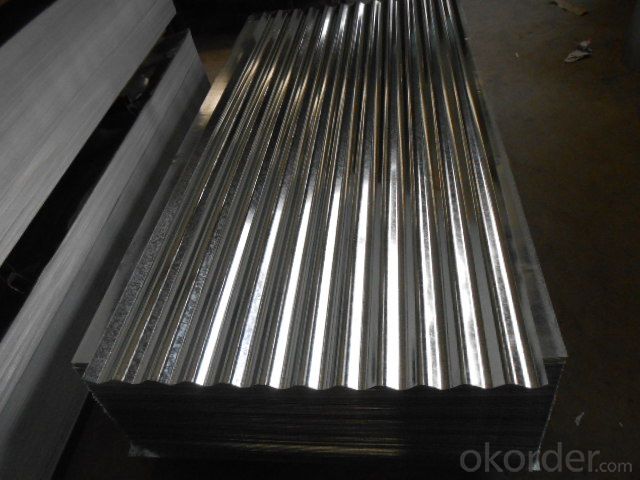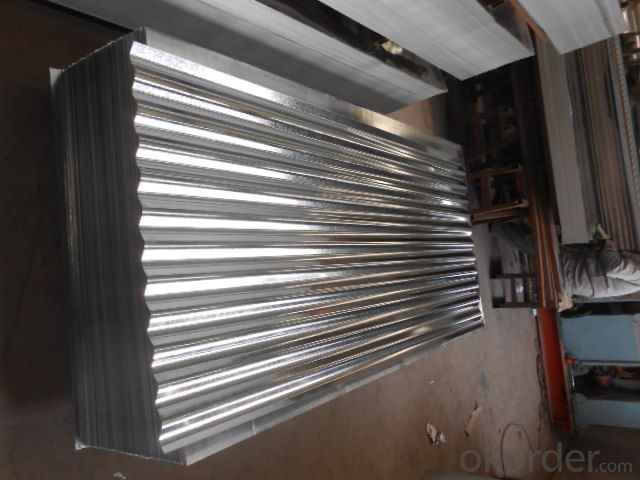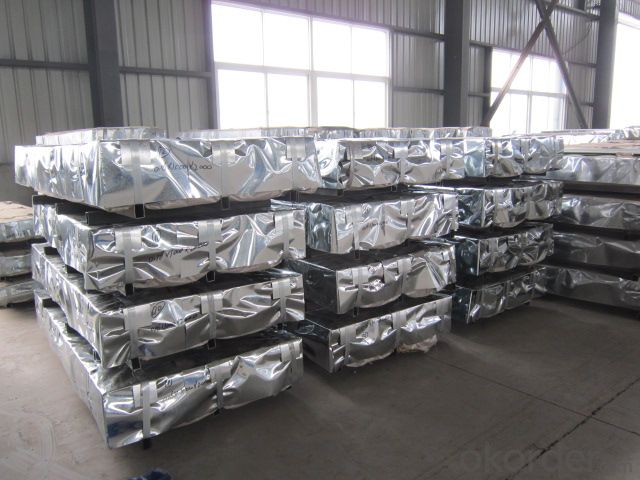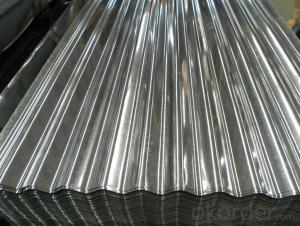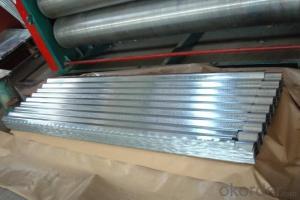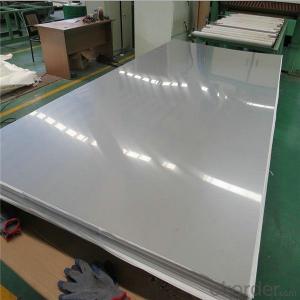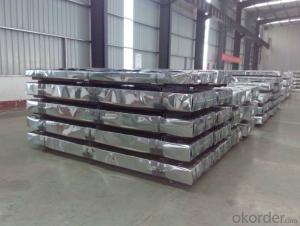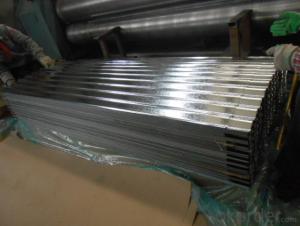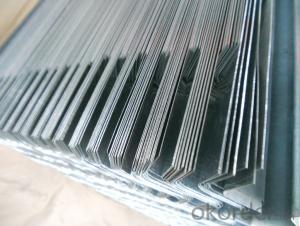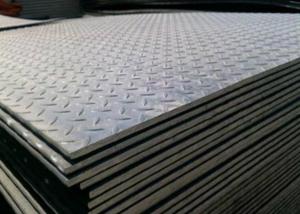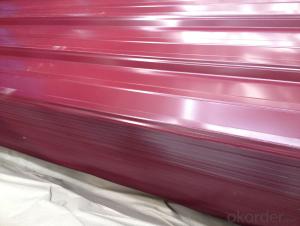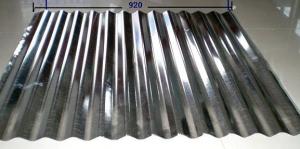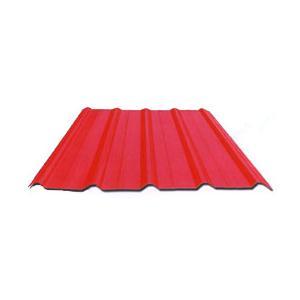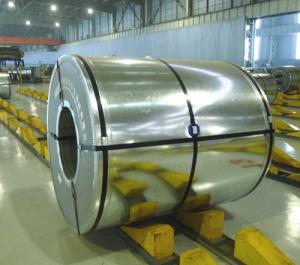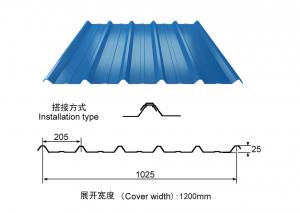Corrugated-Hot-Dipped Galvanized Steel Sheets
- Loading Port:
- Tianjin
- Payment Terms:
- TT OR LC
- Min Order Qty:
- 50 m.t.
- Supply Capability:
- 1000 m.t./month
OKorder Service Pledge
OKorder Financial Service
You Might Also Like
Description:
The Corrugated steel sheet is the steel plate which has been wave formed with the cold rolling treatment, trough especial coated dispose
Pressing steel panel with the clear line, and many colors for choice, suitable for any different building style materials, achieving satisfy effects;
Pressing steel panel can be freely incised, it can satisfy the especially designing demands. It apply on convenient construction, and anti-seismic performance, fire proof, waterproof, free of maintenance
Base sheet : galvanized steel sheet, pre painted galvanized steel sheet
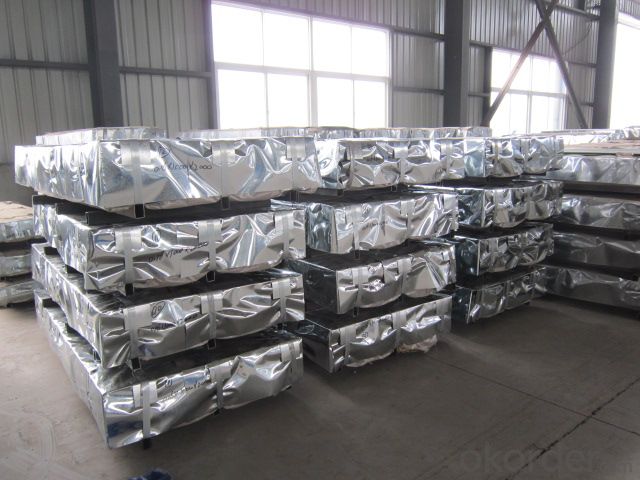
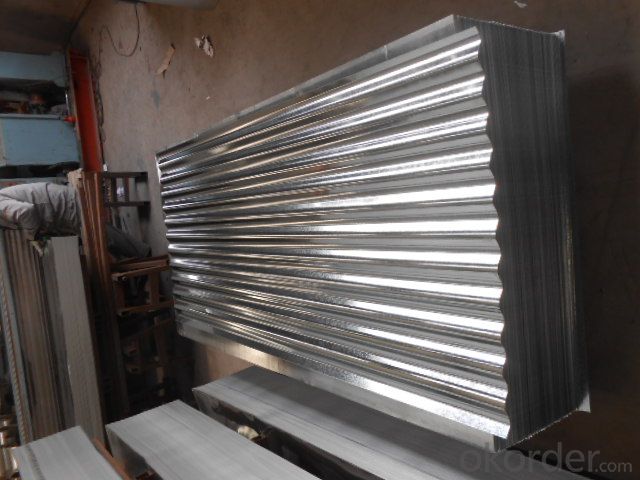
Application:
With excellent cold bending molded manufacturablity, good decoration effect, strong anti-corrosion ability, are also pollution-free and easily recycled. Accordingly, they can be used as final products and basic plates of color coated steel coils and widely applied in construction, home appliances, decoration
Pressing steel panel with the clear line, and many colors for choice, suitable for any different building style materials, achieving satisfy effects;
Product Specification:
Thickness tolerance: (+/-0.01mm)
Zinc coating: 50-180g/m2
Standard:JIS G 3302, SGCH
Package: 2- 3 ton/pallet
Specs: 0.14-0.8mm x 900mm x 2000mm
Width:700-1250mm( 750mm,900mm,1215mm,1250mm,1000mm the most common)
Surface:regular/mini/zero spangle, chromated, skin pass, dry etc.
Package:Standard seaworthy export packing: 3 layers of packing, inside is kraft paper,water plastic film is in the middle and outside GI steel ,sheet to be covered by steel strips with lock.
FAQ:
1.How many pieces for one package?
The pieces for one tone is decided by the thickness of the sheet, but we can make it according to your requirements in the reasonable range.
2. Do you have pallets for the package?
Yes, we must use pallets for the package in order to load.
3. Could you produce the sheets according to our design?
Yes, we can.
- Q: What is the typical weight of steel sheets?
- The typical weight of steel sheets varies depending on their size, thickness, and type of steel being used. Generally, steel sheets can range in weight from a few pounds to several tons. For example, a standard 4x8 foot steel sheet with a thickness of 1/4 inch can weigh around 110 pounds, while a larger 10x10 foot sheet with a thickness of 1 inch can weigh over 1,000 pounds. It is important to note that these are just general estimates, and the weight can vary based on specific factors such as the alloy composition or any additional coatings applied to the steel sheets.
- Q: Can the steel sheets be easily welded?
- Steel sheets can indeed be welded with ease. Joining steel sheets together is commonly achieved through the process of welding. This procedure entails melting the edges of the steel sheets, followed by allowing them to cool and solidify, resulting in a sturdy connection. It is worth mentioning, however, that the ease of welding may vary depending on factors such as the type and thickness of the steel sheets, as well as the expertise and experience of the welder. Furthermore, it is crucial to adhere to appropriate safety measures and welding techniques to guarantee a successful and secure welding procedure.
- Q: Are the steel sheets suitable for food-grade applications?
- Yes, steel sheets can be suitable for food-grade applications. Stainless steel in particular is commonly used in the food industry due to its excellent corrosion resistance, durability, and ease of cleaning. It is non-reactive and does not release any harmful substances into food, making it a safe choice for food storage, processing, and transportation. Additionally, stainless steel is resistant to high temperatures and can withstand rigorous cleaning and sanitization processes, making it ideal for use in food-grade applications. However, it is important to ensure that the steel sheets meet the necessary food-grade standards and regulations before using them in any food-related setting.
- Q: What is the average thickness of galvanized steel sheets?
- The average thickness of galvanized steel sheets can vary depending on the specific application and industry standards. However, commonly available galvanized steel sheets typically range in thickness from around 0.4 millimeters to 3.175 millimeters. It is important to note that thicker galvanized steel sheets are often used for more heavy-duty applications, such as construction and industrial purposes, while thinner sheets may be suitable for lighter applications like automotive or household appliances. Additionally, it is advisable to consult the relevant industry standards or manufacturers' specifications for precise thickness requirements for specific applications.
- Q: Steel plate for steel structure, what kind of steel plate is it?
- Carbon steel, low alloy high strength structural steel and high quality carbon structural steel are often used in building engineering.
- Q: What is the process of stamping designs on steel sheets?
- The process of stamping designs on steel sheets involves using a custom-made die or mold that is pressed onto the steel surface with high force. This causes the design to be permanently imprinted onto the steel sheet.
- Q: How do steel sheets perform in tensile strength?
- Steel sheets have excellent tensile strength, meaning they can withstand high levels of stretching or pulling forces without breaking or deforming. This is due to the strong and interconnected molecular structure of steel, making it a reliable and durable material for various applications that require resistance to tension.
- Q: Are steel sheets resistant to staining or discoloration?
- Yes, steel sheets are generally resistant to staining or discoloration due to their inherent corrosion-resistant properties.
- Q: What is the difference between hot dipped galvanized and electro galvanized steel sheets?
- Galvanized steel sheets can be categorized into two types: hot dipped galvanized and electro galvanized. These two types differ in how they are applied and the resulting characteristics of the coating. Hot dipped galvanized steel sheets are made by immersing the steel into a bath of molten zinc. This process creates a thick and durable coating that effectively prevents corrosion. The zinc completely covers the surface and edges of the steel, ensuring comprehensive protection against rust and other forms of degradation. The thickness of the coating can be adjusted based on the specific application and level of protection required. On the other hand, electro galvanized steel sheets are produced through electroplating the steel with a thin layer of zinc. First, the steel is cleaned and treated with an acid solution to remove impurities and enhance adhesion. Then, it is submerged in a solution of zinc electrolyte, and an electric current is applied to the bath. This causes the zinc ions to bond with the surface of the steel. As a result, the coating formed is much thinner compared to hot dipped galvanized steel. Due to the thinner coating, electro galvanized steel sheets offer less resistance to corrosion compared to their hot dipped counterparts. They are more suitable for indoor applications or environments with less exposure to harsh conditions. However, electro galvanized steel sheets have their own advantages, such as a smoother and more uniform appearance. This makes them a popular choice for applications where aesthetics play a significant role, such as automotive parts or appliances. In conclusion, the primary distinction between hot dipped galvanized and electro galvanized steel sheets lies in their application method and the resulting thickness of the coating. Hot dipped galvanized steel sheets have a thicker and more durable coating, providing superior protection against corrosion. On the other hand, electro galvanized steel sheets have a thinner coating, making them more suitable for indoor applications and offering a smoother appearance.
- Q: How do steel sheets handle thermal conductivity?
- Steel sheets have a relatively high thermal conductivity, which means they are efficient in transferring heat. This property allows steel to quickly absorb and distribute heat across its surface. When exposed to a heat source, such as a flame or hot object, steel sheets rapidly conduct the heat throughout its structure, resulting in uniform heating or cooling. This makes steel sheets suitable for applications that require heat transfer, such as in the construction industry for radiant heating systems or in manufacturing for heat exchangers. The high thermal conductivity of steel also makes it a preferred material for cookware, as it ensures even heat distribution and efficient cooking. However, it is important to note that steel's thermal conductivity can also make it prone to heat loss in colder environments, requiring appropriate insulation measures to maintain desired temperatures.
Send your message to us
Corrugated-Hot-Dipped Galvanized Steel Sheets
- Loading Port:
- Tianjin
- Payment Terms:
- TT OR LC
- Min Order Qty:
- 50 m.t.
- Supply Capability:
- 1000 m.t./month
OKorder Service Pledge
OKorder Financial Service
Similar products
Hot products
Hot Searches
Related keywords



